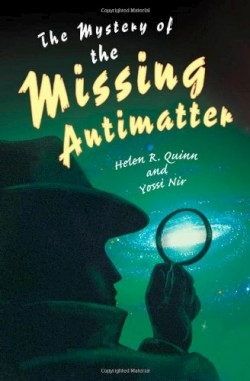
The Mystery of the Missing Antimatter
Physicists argue that the amounts of matter and antimatter were equal when the universe began, but shortly after, antimatter became extremely rare in the part of the universe we know anything about.
To understand why, the authors take us on a journey through the history of mistakes, misunderstandings, and triumphs of physics. This is a broad overview of modern particle physics encompassing early concepts through modern quantum field theory.
The authors rely on analogy to encourage understanding of complex concepts. “Imagine another day at the races,” they urge “one car is matter and the other is antimatter.” The analogy is used to explain a theory of the symmetry of nature. They also describe interesting characters that help fill the human aspects of the science.
One of the authors, Nir, describes a presentation for the Russian physicist Andrei Sakharov. “I… was so surprised to find myself explaining physics to him, that I literally lost my words. This was by far the poorest presentation that I gave in my life.” In another section the length of a seawall is compared with the length of waves that crash against it and the subsequent change in the waves is used as a prelude to a discussion about how scientists can “see” disturbances in particle waves. There are good descriptions of current cosmological thinking such as the Grand Unified Theory as well as the Standard Model. There are efforts to apply thinking to test these models and indeed, to question their viability. “Like good detectives we must return again and again to the scene of the crime, to the underlying laws of physics,” the authors write. Having established the premise for a basic understanding, the authors then get to the real topic of the book: What happened to the antimatter?
The title and the book’s typography lend a note of lightness to readers’ expectations. Beware: the book is serious science with a dose of serious math. But for high school or college students, or anyone wanting to know how physics works and physicists think, the writers have made a difficult topic comprehensible as well as compelling.
Reviewed by
Joe Mielke
Disclosure: This article is not an endorsement, but a review. The publisher of this book provided free copies of the book to have their book reviewed by a professional reviewer. No fee was paid by the publisher for this review. Foreword Reviews only recommends books that we love. Foreword Magazine, Inc. is disclosing this in accordance with the Federal Trade Commission’s 16 CFR, Part 255.
